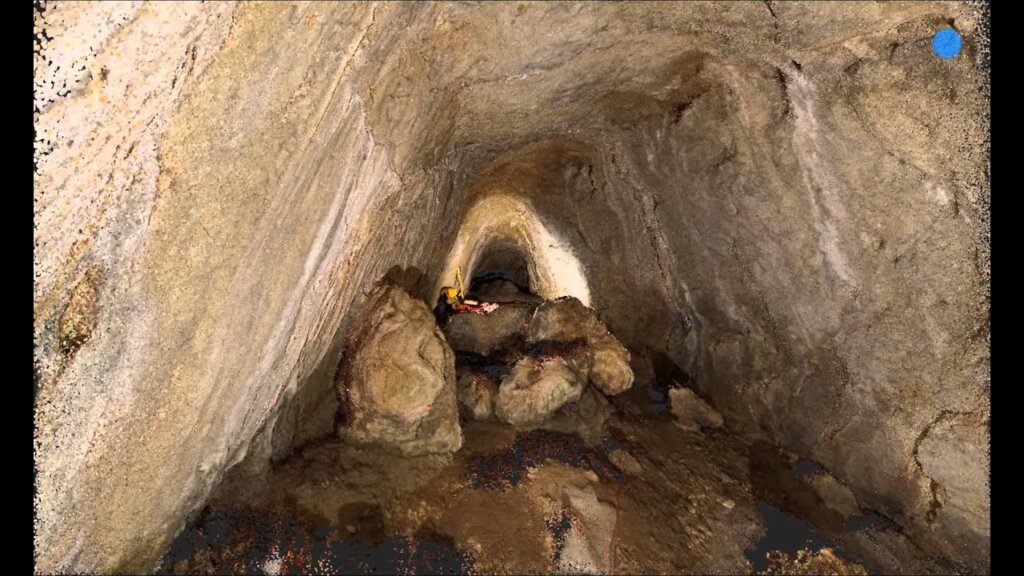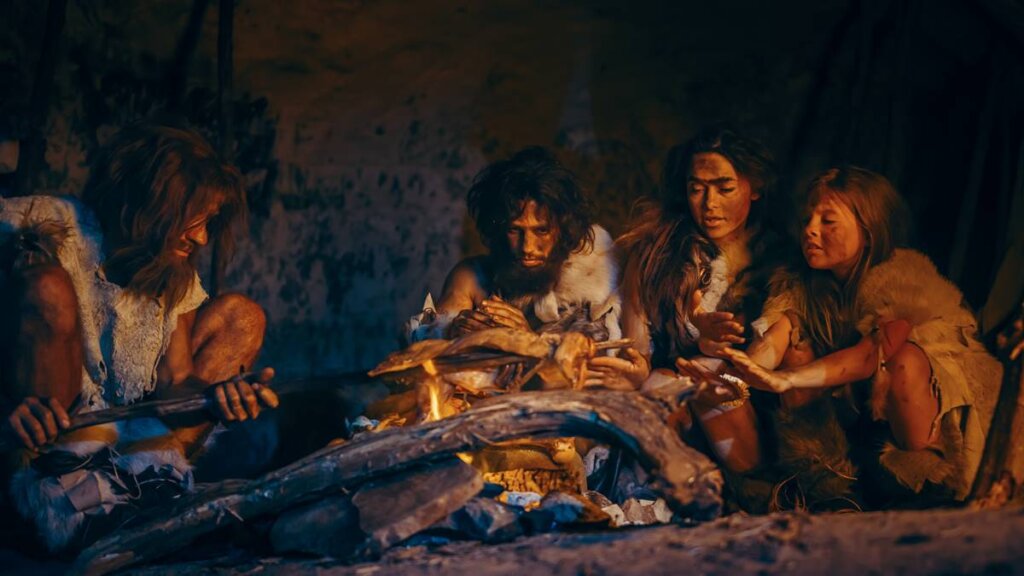The Story of Neve, the Prehistoric Newborn


Written and verified by the psychologist Valeria Sabater
The loss of a baby is probably one of the most devastating experiences for anyone, regardless of when and where it happens. This is something we’re able to appreciate in the discovery of Neve, She was a prehistoric newborn infant who was buried more than 10,000 years ago. She was found in the cave of Arma Veirana, in Italy. It’s the oldest tomb of a newborn baby ever found in Europe. It was there that archeologists found this little girl who died 40 days after her birth.
Archaeologists have named her Neve (snow in Italian), the newborn who our ancestors honored in a delicate, spiritual, and loving way. Indeed, her family gave her an extremely special burial. This revealed, not only the pain that her death had caused them but also the recognition of newborns as an integral part of a social group.
In fact, it appears that their cosmogony, way of understanding death, and funeral practices were close to that of current humanity. It didn’t matter that this little girl only lived for a few weeks. They considered her to be an important member of the social hierarchy. For this reason, they adorned her body with beads and charms. Furthermore, they gave her the most careful burial.
A team of archaeologists, led by National Geographic explorer, Jamie Hodgkins, have found the oldest burial site of a newborn child in Europe. The discovery suggests that our Mesolithic ancestors valued boys and girls equally.

Neve, the prehistoric baby with seashells on her shroud
The material remains found on an archaeological site are like a window to our past. They help us understand our evolution in almost every aspect. Our cognitive, social, technological, biological, cultural, and even spiritual development.
This particular cave in Liguria, in northwestern Italy, has been studied for years. It was in 2017 that the excavations began to provide interesting data. In fact, archeologists found many seashells in one section of the cave. They were perforated and some seemed to be set in what looked like a tiny shroud.
Gradually, the researchers started to unearth small human bones. They discovered they belonged to a baby wrapped in a cloth. It contained a whole array of fascinating ritual objects. DNA analysis revealed that the newborn was a girl. She belonged to a lineage of European women known as the U5b2b haplogroup.
Neve was wrapped in a shell-embellished cloth. It’s thought that the little girl traveled with her mother in a kind of sling.
The loss of certain Mesolithic hunter-gatherers
The Mesolithic Age was the stage that followed the last ice age. Hunting and gathering were the main ways of life. It was a hard period, but also decisive for our evolution. Not only did stone-working techniques improve, but more sedentary groups began to emerge. This facilitated the consolidation of social groups and their hierarchies.
Our ancestors at this time were forced to cope with extremely low temperatures. Consequently, they often found it difficult to obtain food. We know from the tests that Neve’s mother had a plant-based diet. Moreover, during pregnancy, the little girl had developmental problems.
We don’t know the exact cause of her death. However, we know without a doubt that the harsh conditions in which her family lived meant neonatal deaths were frequent. In fact, in Neve’s case, due to physiological stress, her teeth had stopped growing a month or so before birth.
A special burial
Neve was wrapped in a shroud and buried in the deepest part of the Arma Veirana cave. On the cloth, were sixty seashells that had been presumably attached to the fabric. In addition, she had four pendants with her and a talon from an eagle owl. This is interesting as the environment isn’t exactly close to the coast. Therefore, her relatives must’ve collected and saved the shells from previous trips.
The burial was meticulous and careful. This suggests it involved an intense material and emotional investment on the part of the group. The beads were pierced, set in the shape of a necklace, and delicately attached to the shroud in which the baby was wrapped. The owl claw presumably symbolized an element of power or protection.
This burial takes us back to the exact moment in the past when a family had to say goodbye to their youngest member. A girl to whom they dedicated a beautiful burial as a symbol both of their affection and the importance they gave to her life.
Our ancestors left us a thoughtful and really beautiful message in this cave burial in Liguria. It was the fact that even the smallest, briefest, and most fragile life must be revered, loved, and cared for.

Motherhood in prehistoric times
It’s extremely rare to uncover baby burials from prehistoric times. Neve’s case is unique and exceptional. Moreover, it’s the oldest newborn burial site ever found in Europe. Research reveals how unusual it was that the shroud in which she was wrapped was preserved.
Experts have been able to deduce that Neve traveled in a kind of sling with her mother. This would’ve made it easier for her to collect and search for food. Motherhood in the Mesolithic age certainly wasn’t easy. However, just like today, mothers sought at all times to keep their babies extremely close to them, with skin-to-skin contact if possible.
We don’t know what Neve’s mother felt when she passed away, but it’s pretty easy to guess. After all, the meticulous way in which the lifeless little girl was beautified and adorned clearly demonstrates the love and devotion of those close to her. Without a doubt, this discovery teaches us, once again, how valuable human life is, no matter how brief and fragile it may be.
All cited sources were thoroughly reviewed by our team to ensure their quality, reliability, currency, and validity. The bibliography of this article was considered reliable and of academic or scientific accuracy.
- Gravel-Miguel, C., Cristiani, E., Hodgkins, J. et al. The Ornaments of the Arma Veirana Early Mesolithic Infant Burial. J Archaeol Method Theory (2022). https://doi.org/10.1007/s10816-022-09573-7
This text is provided for informational purposes only and does not replace consultation with a professional. If in doubt, consult your specialist.








